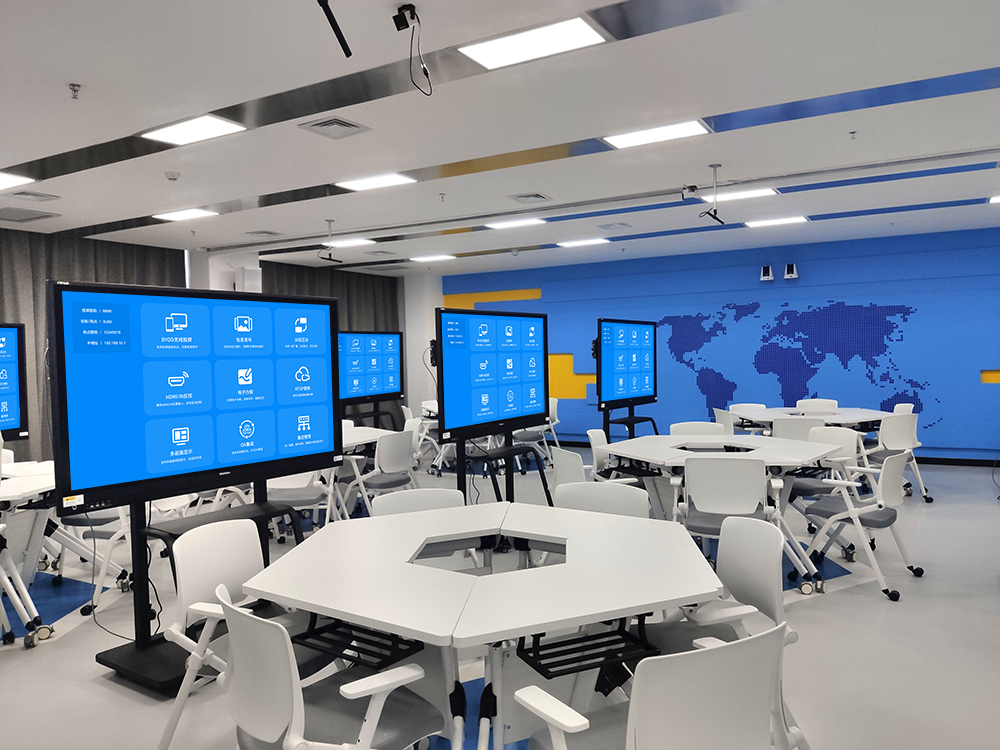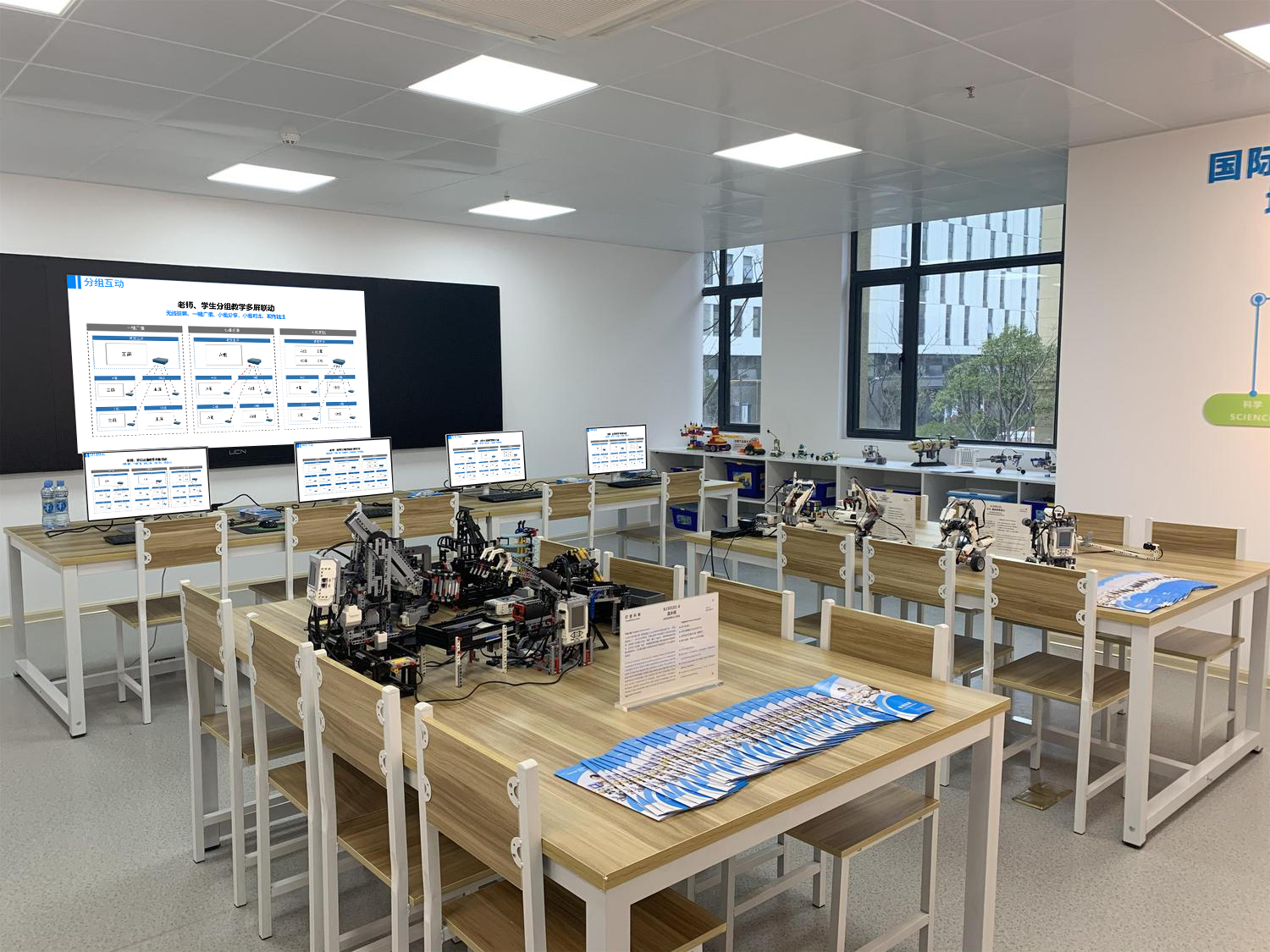Interactive Classrooms: Bringing Classroom Interaction to Life in Every Lesson
An interactive classroom shouldn’t just be a collection of devices; it should be a space where teachers and students can “talk and move” at any time. A practical solution follows the natural flow of a lesson, from the teacher’s lecture to group discussions and sharing results, making interaction happen seamlessly without disrupting the teaching pace.
Effortless from the Moment You Enter
A teacher can walk into a classroom with a tablet and not have to press a single button or connect to the network. When they get close to the screen mirroring terminal at the front of the room, the courseware on their tablet will automatically “jump” to the main classroom screen. If they walk to the back of the room to help a student, they can tap a “mirror back” button on the tablet to transfer the courseware from the main screen back to their tablet. This allows them to point and explain to the student without having to run back to the front of the room to adjust the equipment.
Even students’ phones and old tablets can be used. After they take a photo of a draft on paper or record a short video of an experiment, they can scan a QR code on the corner of the desk to mirror it to their group’s small screen in just 3 seconds. Whether it’s an Android or Apple device, it connects without pop-ups or lagging, and there’s no chaos when more than 30 devices are connected simultaneously.
No Dull Moments During Class
Group Discussions Are More Engaging
Instead of huddling together to look at one phone, each group’s small screen can now display content from 3 students at the same time. On the left is a mind map drawn by Xiao Zhang, in the middle are the steps for solving a problem written by Xiao Li, and on the right is a photo of an experiment taken by Xiao Wang. The split screen is neatly arranged. Whoever has an idea can simply point to their own mirrored content to explain it, without having to pass a device around.
Want to share your group’s ideas with the whole class? The group leader can raise their hand, and the teacher can tap “mirror to main screen” on their tablet at the front of the room. The content from the small screen will be enlarged on the main screen for the whole class to see, so other groups can provide more targeted feedback.
Instant Feedback Is a Step Ahead
After a teacher puts a question on the main screen, students can pull out their phones and scan a QR code in the corner of the blackboard to submit their answers. A statistical analysis immediately pops up on the main screen, showing that out of 45 students, 28 got it right, and the most common incorrect answer was the third option. The teacher can then tap that incorrect option, and Xiao Ming’s answer page will be displayed. “See here, you used the wrong formula, right?” The teacher can then circle and explain it on the main screen, which is much more effective than vaguely saying, “Everyone, pay attention.”
Lab classes are even more convenient. The teacher can use their phone to film a beaker, and the process of the solution changing color is mirrored to the main screen in real time, so students in the back don’t have to stand up to see. If a student calls out, “I couldn’t see it clearly,” the teacher can move the phone’s lens closer, and the details on the main screen will instantly become clear, without having to redo the experiment.
Learning Continues After Class
When the school bell rings, the courseware on the main screen is automatically saved to the class’s cloud drive. Students can pull out their phones and scan a QR code on the main screen to save the annotated courseware and the experimental videos filmed in class to their own phones, so they don’t have to worry about missing notes when they review at home.
The teacher can also mirror extra exercises to the main screen with a note that says, “Scan to do the problems, and we’ll go over them in class tomorrow.” Students can do them by scanning the QR code as they walk past the classroom. After they submit their answers, the teacher’s tablet will receive a notification. The teacher can then grade the papers and mark the incorrect answers in the evening. The next day, they can mirror the incorrect questions directly to the main screen and go over them, so students will pay closer attention.
There’s no need to panic if a device breaks. An administrator can check the status of classroom equipment from a backend in their office and can see at a glance if a screen mirroring terminal has no signal or if a small screen is lagging. They can then tap “remote restart” on their phone, which can solve most problems, so they don’t have to make a special trip to the classroom and won’t disrupt the next day’s class.
This solution doesn’t add any “burden” to the classroom. Instead, it follows the teacher’s lecturing habits and the students’ learning pace, making interaction not a “deliberately arranged activity” but a natural part of the class.